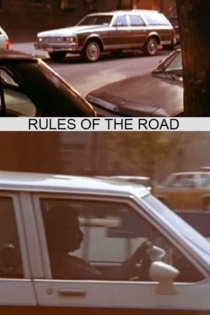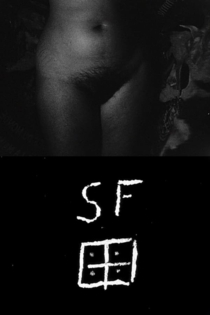
Su Friedrich
1954 (70 лет)Dykes, Camera, Action!
Caroline Berler
Desiree Akhavan, Cheryl Dunye
The film examines the ways that women directors have contributed to this genre and emphasizes the role that the media play in representation of sexuality and gender, underscoring the power that film has to shape our perceptions of one another. Visually, this documentary comes to life on screen through compelling and intimate original interviews, intercut with emotionally-charged archival footage, photographs, ephemera, inspired music, and film clips.
Dykes, Camera, Action!
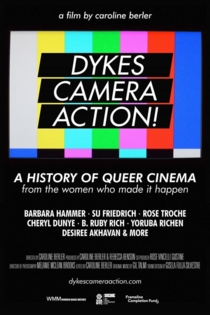
I Cannot Tell You How I Feel
Su Friedrich
Lore Friedrich, Maria Friedrich
Su Friedrich has taken up the camera again in her ongoing quest to film the battleground of family life. Her mother Lore--who played the lead in The Ties That Bind (1984), a film about her experiences growing up in Germany during the Second World War--plays the lead again, this time kicking and protesting against being moved at the age of 94 from her home in Chicago to an “independent living” facility in New York. Friedrich and her two siblings fill out the supporting roles, cajoling, comforting, and freaking out.
I Cannot Tell You How I Feel

Sink or Swim
Su Friedrich
Jessica Meyerson
Through a series of twenty six short stories, a girl describes the childhood events that shaped her ideas about fatherhood, family relations, work and play. As the stories unfold, a dual portrait emerges: that of a father who cared more for his career than for his family, and of a daughter who was deeply affected by his behavior. Working in counterpoint to the forceful text are sensual black and white images that depict both the extraordinary and ordinary events of daily life. Together, they create a formally complex and emotionally intense film.
Sink or Swim

From the Ground Up
Su Friedrich
With few words and no polemics, From the Ground Up shows how an ordinary cup of coffee occupies center stage in the world economy. Traveling with the filmmaker from Guatemala to South Carolina to New York City and seeing each phase of coffee production unfold—the growing, picking, processing, distribution, brewing and selling—one comes to understand that most products we use have passed through the hands, and lives, of countless people in numerous countries. As the world’s second most traded commodity after oil, it’s all about the coffee, and about everything else we consume, consume, consume….
From the Ground Up

The Ties That Bind
Su Friedrich
Lore Bucher
The Ties That Bind is an experimental documentary about the filmmaker's mother, who was born and lived in southern Germany from 1920-1950. Through a mixture of personal anecdote and social history, she describes the rise of Nazism, the war years, and the Allied occupation, during which she met her future husband, an American soldier. The Ties That Bind breaks with the usual format of war documentaries, thus allowing a different portrait of the individual to emerge, while it reflects on the current political situation in America and the filmmaker's activities in relation to those issues.
The Ties That Bind

First Comes Love
Su Friedrich
First Comes Love consists of perfectly choreographed scenes of four wedding ceremonies accompanied by a complex medley of popular love songs. All seems to be going as it should until the couples reach the altar, when the celebratory atmosphere is interrupted for a surprising public service announcement. Then song and dance continues until the happy couples depart, leaving behind a dwindling crowd and a few altar boys who carefully sweep up the rice that blankets the pavement like snow. The film doesn't attempt to defend--or discredit--the institution of marriage. Instead, it reveals the many subtle emotions surrounding the event, and raises questions about how the double standard regarding marriage affects gay and straight couples.
First Comes Love
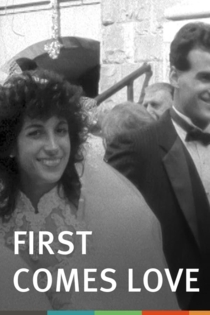
Damned If You Don't
Su Friedrich
Peggy Healey, Ela Troyano
Beautifully shot in black and white, it blends conventional narrative technique with impressionistic camerawork, symbols and voiceovers to create an intimate study of sexual expression and repression. It begins with footage from a stylish old potboiler about an isolated convent, whose tale of passions leashed and unleashed provides the leitmotif for a young lesbian who watches it and the lonely nun she pursues and seduces. As the two women's lives come closer to joining, voiceovers from the biography of a 16th century lesbian nun and the reminiscences of a woman's closeted romances at a Catholic school flesh out the theme. When the two women finally meet and make love, the woman's careful unwrapping of the nun's complicated prison of clothing is both foreplay and liberating metaphor.
Damned If You Don't

Seeing Red
Su Friedrich
Su Friedrich
In Seeing Red, three elements run parallel, overlap, diverge, lock horns and in various other ways give voice to the notion that a color, a melody, or a person has multiple characteristics that cannot be grasped by, or understood within, a simple framework. One element is purely visual. One is very verbal and minimally visual. One is purely musical. So is red the color of a fire truck or a ruby, of rust or a rose, of blood or a brick? How fixed is a melody if it can be twisted, stretched and shaken to the point where we no longer recognize its original form? And when we "see red," what color is that exactly? What aspect of passion are we feeling? Are we looking outward and seeing injustice and cupidity, or looking inward at our own limitations and failings?
Seeing Red

The Odds of Recovery
Su Friedrich
After a twenty year period of multiple illnesses and injuries, the filmmaker turns the camera on herself as a way to analyze her chances for a happier, healthier life. In the process, she captures the frustration, tedium and petty annoyances of a revolving-door relationship with the medical establishment, while portraying the complicated web of emotions that accompany any medical problem. With humor and honesty, The Odds of Recovery uses the filmmaker's medical history as a means to address a perennial human problem: the desire to avoid conflict and deny the need for radical change.
The Odds of Recovery

Scar Tissue
Su Friedrich
Scar Tissue by Su Friedrich is a filmic version of a white canvas or a silent music piece.The fact that Friedrich never really shows the whole body, but rather plays off of body parts could be read as a desire to show less of the people on the screen, so that the viewer's reading can be generalized. If the "characters" existed as people, the images would inevitably read to be telling a story about these people. The legs and torsos do not signify people; it is the experience of these body parts and the rhythm with which they are portrayed that constitute the work.
Scar Tissue
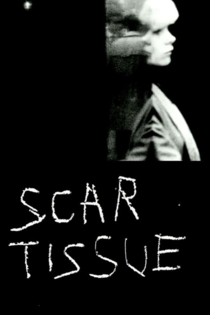
Cool Hands, Warm Heart
Su Friedrich
The film begins with a series of events on a crowded outdoor market street. Women on stages perform "private" rituals: shaving legs and armpits, fixing their hair, etc. A woman tries to disrupt their "work." She struggles to set herself apart from them, to resist the forces of habit, but gradually becomes more involved than she is willing to admit. Although she sets in motion a chain reaction of rebellion, she isn't able to keep the momentum going. She stops before carrying it to the logical conclusion, and ends up on the stage herself. Can we hold a knife without stabbing ourselves? Can we hold a knife without even thinking of doing that? And do we need knives?
Cool Hands, Warm Heart

Cinetracts '20
Želimir Žilnik, Sheilah ReStack
A global portrait documenting the year's events, Cinetracts '20 features the work of an international lineup of 20 filmmakers. Capturing the zeitgeist in their own backyard, the artists' short films are the culmination of a year-long residency project.
Cinetracts '20

Gently Down the Stream
Su Friedrich
GENTLY DOWN THE STREAM is constructed from fourteen dreams taken from eight years' worth of my journals. The text is scratched directly on to the film so that you hear your own voice as you read. The accompanying images of women, water, animals and saints were chosen for their indirect but potent correspondence to the text.
Gently Down the Stream


